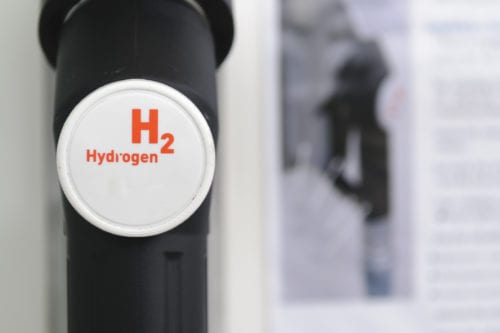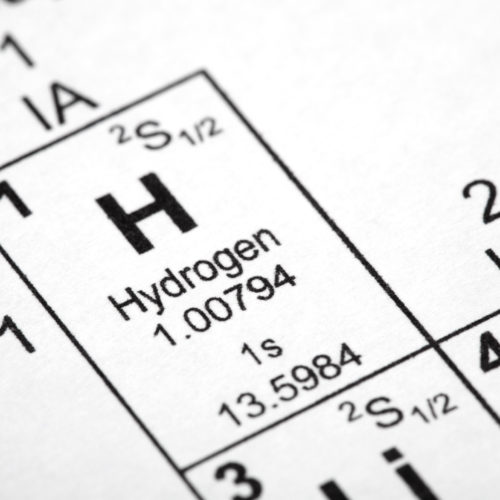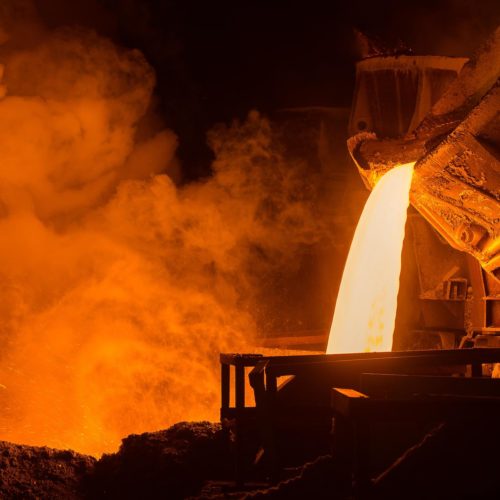High pressure (700 bar) hydrogen fuel filler nozzle for refueling hydrogen powered commercial vehicles (High pressure

Could Power Sector Demand Scale US Hydrogen 100X?
In late September, US power giant Entergy announced plans to begin exploring the use of hydrogen (H2) in its generation portfolio, as part of a commitment to reach net zero emissions by 2050. This includes producing hydrogen using electrolysis powered by both renewable and nuclear generation, and burning hydrogen blended with natural gas in power plants. The latter part will involve a partnership with Mitsubishi Hitachi Power Systems (MHPS).
This follows on announcements for more than 4 gigawatts of power plant projects across the United States with turbines that can burn a mix of hydrogen and natural gas. All of these projects have contracts with MHPS to supply turbines built for this purpose, and all plan to transition to 100 percent hydrogen.
Little is known about the specifics of Entergy’s plan, other than that the project will start at its proposed Orange County Power Station in Texas. But regardless of the details, there is an implied demand for hydrogen that is roughly 100X what the outlook of announced electrolysis projects suggests.
Massive Potential Demand for Hydrogen
Currently the United States generates roughly 1,600 terawatt-hours (TWh) of electricity from natural gas each year, and gas demand in the power sector was estimated by the US Department of Energy at 11,000 trillion btu (Tbtu) in 2019.
Per RMI’s analysis, we expect that much of the US natural gas fleet will be replaced by renewables. However, some gas plants may still be needed to supply dispatchable power, particularly during extended periods of low renewable energy output. Under plans to fully decarbonize the power system, these will require either carbon capture and storage, which has not been shown to be cost-effective, or an alternative fuel.
And while there are other options than hydrogen to replace natural gas and supply this dispatchable power, these have their limits. According to NRDC, there is only approximately 2,000 Tbtu of renewable natural gas and synthetic natural gas potential in the United States, to be shared across power generation, industry, and mobility uses. Also, it will be outrageously expensive.
This leaves the bulk of demand to hydrogen, and it is not small. While H2 is less dense than methane (the main component of natural gas) measured in weight per cubic foot, it produces more energy per unit of weight, with about 125 MMbtu/ton compared with approximately 50 MMbtu/kg for natural gas. Therefore, a transition to 100 percent hydrogen in all US gas turbines currently installed would require a whopping 88 million metric tons of H2. This can be compared with the current total US hydrogen market—which is mostly for petrochemical and fertilizer end-uses—of 10 million metric tons.
But more importantly, the majority of the existing hydrogen is produced from natural gas without carbon capture, effectively not providing any decarbonization at all to power generation. The production capacity for clean hydrogen (“green” or “blue”) is much smaller. A recent study by the Institute for Energy Economics and Financial Analysis suggests that all the hydrogen electrolysis projects currently planned in the United States will be able to produce 126,000 metric tons of hydrogen per year.
Substituting only 15 percent of the current capacity of US gas plants with hydrogen as a fuel would mean demand for 13 million metric tons of hydrogen annually—assuming comparable turbine efficiencies. This would translate to roughly 100X the capacity of hydrogen electrolysis that is currently being built.
Kick-Starting the Hydrogen Economy
There are some details to Entergy’s plans in Texas that could inform future projects. The power giant’s projects are supported by existing infrastructure for industrial hydrogen applications, including a network of dedicated H2 pipelines near Entergy’s proposed plant in Texas. If Entergy uses these pipelines, it can blend hydrogen and gas at the point of combustion. This can enable 50 percent or more hydrogen in blends, as opposed to the 7 percent limit in pipelines that serve other purposes.
As we have noted before, hydrogen offers solutions for applications as varied as decarbonizing steel production, helping to balance mismatches between renewable energy supply and electricity demand, and potentially fueling long-distance trucking as well. In the near-term, blending projects like Entergy’s can kick-start the market for green hydrogen made from renewable-powered electrolysis by driving demand at scale quickly.
The hydrogen revolution in the United States is just getting started. This announcement by Entergy furthers the expectation that in coming years we will see a blossoming of more and larger projects across the hydrogen ecosystem.

